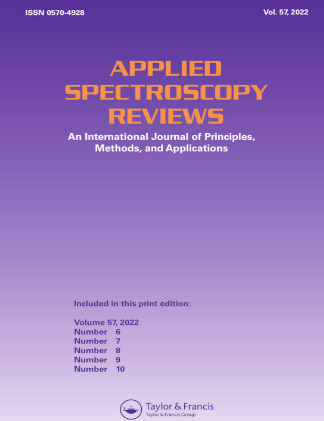Toward a better understanding of indoor air quality holistically integrating improved and new instrumental analytical techniques
IF 5.4
2区 化学
Q1 INSTRUMENTS & INSTRUMENTATION
引用次数: 0
Abstract
People in developed countries are estimated to spend 80–90% of their time indoors, where they can be exposed to poor air quality from numerous and diverse sources. These include mold growth and other microbial pollutants in humid air, to the chemical pollutants that result from emissions from human activities such as cooking, cleaning, smoking and home refurbishments. In fact, the concentrations of many air pollutants can be higher indoors than out, particularly following activities such as cleaning and cooking. Despite these facts, regulation for air pollution focuses mainly on outdoors and the indoor environment is much less well characterized or indeed regulated. With increasing climate change impacts expected in the future, related energy efficiency measures are making buildings considerably more airtight leading to the potential for even higher indoor air pollutant concentrations. Therefore, to reduce our exposure to air pollution, we must consider air pollutant sources and sinks in both the indoor and outdoor environments. We also need to consider the role of ventilation in mixing air between the two, in order to mitigate through appropriate building operation, use and design. Cost Action 17136 INDAIRPOLLNET (INDoor AIR POLLution NETwork) aims to improve our understanding of the cause of high concentrations of indoor air pollutants. It assembles experts in chemistry, biology, standardization, particulate matter characterization, toxicology, exposure assessment, building materials (including green materials), building physics and engineering and building design, performing laboratory and chamber experiments, modeling studies and measurements of relevance to indoor air quality, including outdoor air chemists. This Action is significantly advancing the field of indoor air pollution science, and highlighting future research areas, as well as aiming to to bridge the gap between research and business. In this way, we will be able to identify appropriate mitigation strategies that optimize indoor air quality. One of the objectives of our Action has been to explore the best ways to measure key indoor air pollutants given specific requirements (research question, available funds, building location and characteristics etc.). This special issue therefore summarizes the various measurement techniques that are currently available for indoor air measurements and the advantages and disadvantages of each for the indoor environment. For more information, please visit: https://indairpollnet.eu/朝着更好地理解室内空气质量整体整合改进和新的仪器分析技术
据估计,发达国家的人们有80-90%的时间在室内度过,在室内,他们可能会接触到各种来源的劣质空气。这些污染物包括潮湿空气中的霉菌生长和其他微生物污染物,以及烹饪、清洁、吸烟和家庭装修等人类活动排放的化学污染物。事实上,许多空气污染物的浓度在室内可能高于室外,特别是在清洁和烹饪等活动之后。尽管有这些事实,对空气污染的监管主要集中在室外,而室内环境的特征和监管要少得多。随着未来气候变化影响的增加,相关的能源效率措施正在使建筑物更加密闭性,从而可能导致更高的室内空气污染物浓度。因此,为了减少我们对空气污染的暴露,我们必须考虑室内和室外环境中的空气污染源和汇。我们还需要考虑通风在两者之间混合空气中的作用,以便通过适当的建筑操作,使用和设计来缓解。inairpollnet(室内空气污染网络)旨在提高我们对室内空气污染物高浓度的原因的理解。它汇集了化学、生物学、标准化、颗粒物质表征、毒理学、暴露评估、建筑材料(包括绿色材料)、建筑物理、工程和建筑设计、执行实验室和室内实验、建模研究和与室内空气质量相关的测量方面的专家,包括室外空气化学家。这一行动显著推进了室内空气污染科学领域,突出了未来的研究领域,并旨在弥合研究与商业之间的差距。通过这种方式,我们将能够确定适当的缓解策略,优化室内空气质量。我们行动的目标之一是在给定具体要求(研究问题、可用资金、建筑物位置和特征等)的情况下,探索测量主要室内空气污染物的最佳方法。因此,本期特刊总结了目前可用于室内空气测量的各种测量技术以及每种测量技术在室内环境中的优缺点。欲了解更多信息,请访问:https://indairpollnet.eu/
本文章由计算机程序翻译,如有差异,请以英文原文为准。
求助全文
约1分钟内获得全文
求助全文
来源期刊

Applied Spectroscopy Reviews
工程技术-光谱学
CiteScore
13.80
自引率
1.60%
发文量
23
审稿时长
1 months
期刊介绍:
Applied Spectroscopy Reviews provides the latest information on the principles, methods, and applications of all the diverse branches of spectroscopy, from X-ray, infrared, Raman, atomic absorption, and ESR to microwave, mass, NQR, NMR, and ICP. This international, single-source journal presents discussions that relate physical concepts to chemical applications for chemists, physicists, and other scientists using spectroscopic techniques.
 求助内容:
求助内容: 应助结果提醒方式:
应助结果提醒方式:


